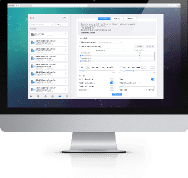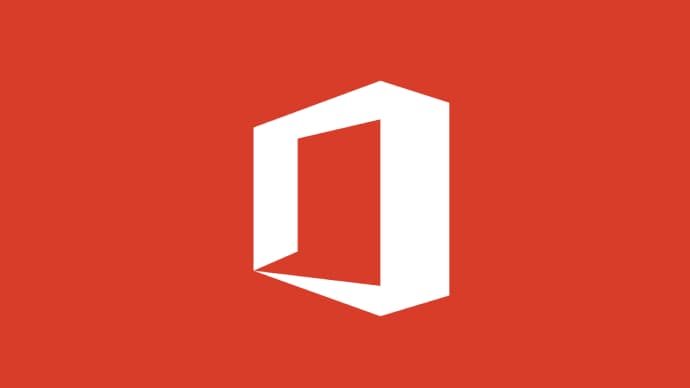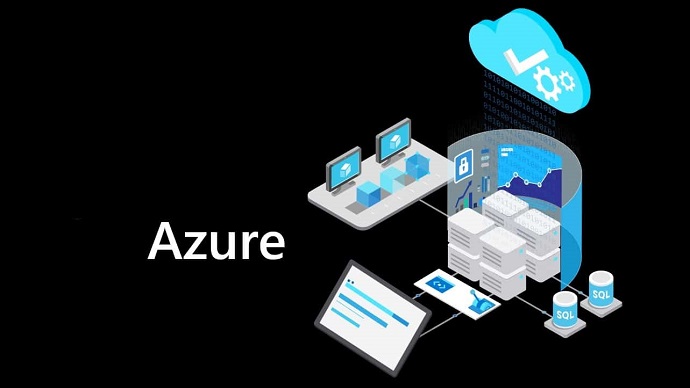Use VCE Exam Simulator to open VCE files

72301X Avaya Practice Test Questions and Exam Dumps
Question 1
A customer is trying to set up a new Branch Session Manager (BSM) but is unable to add the BSM instance in Avaya Aura System Manager (SMGR). When they attempt to do so, the SIP Entity Name does not appear. While troubleshooting the issue, you review the SIP Entity configuration created for the BSM.
What SIP Entity type should be selected for a BSM?
A. Branch Session Manager (BSM)
B. LSP
C. Avaya Aura Session Manager (SM)
D. SIP Trunk
Correct answer: A
Explanation:
In Avaya Aura deployments, when configuring a Branch Session Manager (BSM), it is essential to correctly identify and categorize each system component in System Manager. A BSM is a special deployment of Session Manager that provides SIP-based call control services at a branch location, particularly when the main Session Manager at the core is unreachable. It is often paired with a Local Survivable Processor (LSP) to ensure business continuity during WAN outages or disconnections from the main data center.
When adding a new SIP Entity in System Manager, the SIP Entity Type determines what kind of component is being defined—this directly affects how the system handles that entity, what options are available, and how it integrates with other Avaya components. Each SIP Entity Type is associated with specific configuration behavior and visibility rules within the SMGR interface.
For a Branch Session Manager, the SIP Entity Type must explicitly be set to Branch Session Manager (BSM). This designation allows System Manager to recognize the SIP Entity as a BSM and to make it available for selection when creating a BSM instance. If this step is skipped, or if the SIP Entity is incorrectly created with another type—such as a standard Session Manager or LSP—the System Manager will not display it as an eligible choice in the dropdown when attempting to add the BSM instance.
Option A is correct because it matches the required SIP Entity Type for the specific component being configured. Choosing this ensures that SMGR recognizes it correctly and allows its use in BSM configuration screens.
Option B, LSP, refers to a Local Survivable Processor, which is a component used alongside a BSM to maintain Communication Manager services during outages. However, LSP is not the correct SIP Entity Type for BSM configuration. An LSP typically does not serve SIP Entity functions by itself in SMGR.
Option C, Avaya Aura Session Manager (SM), is used when defining a core Session Manager instance. While BSMs are functionally a type of Session Manager, they are specifically categorized under their own entity type to reflect their branch-specific role. Using the standard Session Manager type will not allow SMGR to recognize it as a BSM.
Option D, SIP Trunk, is used for defining SIP connections between systems, like those between Avaya and third-party equipment or carriers. It is not applicable in the context of defining a BSM component.
To summarize, the reason the SIP Entity Name is not appearing in the BSM configuration screen is likely because the administrator selected the wrong SIP Entity Type during setup. Correcting the type to Branch Session Manager (BSM) will resolve the issue and make the SIP Entity available for selection.
Question 2
Which specific configuration step must be performed on the Avaya Session Border Controller for Enterprise (ASBCE) to enable Remote Workers to download the 46xxsettings.txt file during the phone's boot process?
A. File Transfer Server Flow
B. PPM Mapping Profile
C. File Transfer Mapping Profile
D. Reverse Proxy
Answer: D
Explanation:
When Avaya remote endpoints such as desk phones or softphones boot up outside the corporate network, they need to retrieve configuration files from the enterprise environment. One of the critical files during this boot process is the 46xxsettings.txt file, which provides essential configuration instructions such as call server addresses, backup options, signaling protocols, and other endpoint-specific settings.
Since remote workers are not located within the trusted corporate LAN, their devices cannot directly access internal web or file servers where this file typically resides. This is where the Avaya Session Border Controller for Enterprise (ASBCE) comes into play. The ASBCE functions as a secure bridge between the internal Avaya infrastructure and external, internet-based endpoints.
To provide access to internal configuration files like 46xxsettings.txt, ASBCE uses a Reverse Proxy configuration. The reverse proxy allows requests from external clients (in this case, remote Avaya endpoints) to be routed securely to internal servers. The request appears to the endpoint as if it is connecting to a public-facing address, but behind the scenes, ASBCE forwards that request to the internal file server hosting the configuration file.
Option A, File Transfer Server Flow, relates to defining how files are transferred, but it doesn’t directly enable the endpoint to reach the file from outside the network. It might be part of a broader file server setup, but it isn’t the mechanism that provides external access.
Option B, PPM Mapping Profile, is relevant to how phones access Personal Profile Manager data over the network. This is used for features like button assignments and user profiles, not for basic file retrieval during boot-up.
Option C, File Transfer Mapping Profile, could be interpreted as a related mapping, but it is not the direct method used to expose internal file services to the outside world. Reverse Proxy remains the key element for routing HTTP or HTTPS requests from remote endpoints to internal servers.
Only a Reverse Proxy configuration directly enables the ASBCE to present an externally reachable URL to the remote phone, which then internally maps to the file server containing 46xxsettings.txt. This ensures that the phones can download necessary files securely and reliably during startup, even from outside the corporate firewall.
Thus, Reverse Proxy is the required configuration to support this functionality, making D the correct answer.
Question 3
What configuration step must be performed on the Avaya Session Border Controller for Enterprise (ASBCE) to allow Remote Workers using Avaya One-X Communicator to access instant messaging (IM) features from Avaya Presence Services hosted on Avaya Breeze?
A. XMPP Mapping Profile
B. Reverse Proxy for Avaya Breeze
C. XMPP Relay
D. Server Flow for Avaya Breeze
Answer: B
Explanation:
When deploying Avaya One-X Communicator for Remote Workers, one of the common use cases is enabling access to instant messaging (IM) and presence services provided by Avaya Breeze and its Presence Services snap-in. Remote Workers operate from outside the corporate network, so their communication must be securely relayed through the Avaya Session Border Controller for Enterprise (ASBCE).
The ASBCE acts as a gateway between internal enterprise services and external users, providing secure access and NAT traversal. In order to access the IM and presence features hosted on Avaya Breeze, a specific configuration is required on the ASBCE to ensure that traffic destined for Breeze is correctly routed and secured.
The configuration needed is the Reverse Proxy for Avaya Breeze. This reverse proxy setup allows HTTP/HTTPS traffic from One-X Communicator to reach Breeze and its web-based services, including Presence Services. Breeze provides these services over standard web protocols, so the reverse proxy must be enabled to ensure remote clients can resolve and connect to the Breeze node correctly.
Option A, XMPP Mapping Profile, is incorrect because Avaya Presence Services no longer requires a separate XMPP configuration on ASBCE. The presence architecture in Breeze-based systems uses HTTPS instead of raw XMPP for client access. Option C, XMPP Relay, is not used in this architecture and applies more to legacy systems where direct XMPP communication was necessary. Option D, Server Flow for Avaya Breeze, refers to SIP signaling paths and media handling for voice or call flows, not web-based IM and presence services.
Therefore, to enable Remote Workers using Avaya One-X Communicator to access presence and IM features, a reverse proxy for Avaya Breeze must be configured on the ASBCE. This allows secure external access to internal Breeze services without compromising network integrity. It also ensures that all IM features operate seamlessly for remote users, just as they would internally. As such, option B is the correct and most accurate choice.
Question 4
You have received a ticket indicating that the Branch Session Manager (BSM) is not functioning with the Survivable Remote Server (LSP) connected to Avaya Aura Communication Manager (CM). You suspect there may be a misconfiguration in the BSM Security Module IP Address on the LSP.
Which method accurately describes how to verify the BSM IP Address on the LSP server?
A. On Avaya Aura System Manager (SMGR) web interface, navigate to Elements > Communication Manager > Element Cut-Through. Select the Avaya Aura Communication Manager (CM) and execute the display lsp XXXX command, where XXXX is the Survivable Processor node-name. On the first page verify the BSM SIP Entity IP Address.
B. Log into the System Management Interface (SMI) of the LSP. Navigate to Administration > Server (Maintenance). In Server Configuration > Server Role, scroll down to Optional BSM IP Address section and verify the BSM SIP Entity IP Address.
C. On Avaya Aura System Manager (SMGR) web interface, navigate to Elements > Communication Manager > Element Cut-Through. Select the Avaya Aura Communication Manager (CM) and run the display survivable-processor XXXX command, where XXXX is the Survivable Processor node-name. On the first page verify the BSM SIP Entity IP Address.
D. Log in to the System Management Interface (SMI) of the Main Avaya Aura Communication Manager (CM) Server. Navigate to Administration > Server (Maintenance). In Server Configuration > Server Role, scroll down to Optional BSM IP Address section and verify the BSM SIP Entity IP Address.
Correct answer: B
Explanation:
To confirm whether the Branch Session Manager (BSM) and Local Survivable Processor (LSP) are correctly communicating, one key configuration point is the BSM Security Module IP Address that must be defined on the LSP. This IP address allows the LSP to recognize and communicate securely with the BSM in the event of WAN failure or main site unavailability.
Option B is correct because the System Management Interface (SMI) of the LSP is the appropriate place to check or update the BSM IP configuration. In the SMI interface of the LSP itself, administrators can navigate to the Administration > Server (Maintenance) section. From there, within the Server Configuration > Server Role settings, there is a specific field labeled Optional BSM IP Address. This is where the SIP Entity IP Address for the BSM should be entered and verified.
Verifying this field directly on the LSP ensures that the correct configuration is applied to the server that will be responsible for maintaining local survivability. This step is essential because if the IP address of the BSM is incorrect or missing, the LSP will not be able to establish the necessary SIP connection to BSM, rendering failover or survivability functionality inoperative.
Now, let’s examine why the other options are incorrect:
Option A mentions the display lsp XXXX command through Element Cut-Through. While this command is valid within CM to review LSP status, it does not show the BSM SIP Entity IP Address specifically. This command focuses more on high-level LSP configurations and routing relationships—not the SIP interconnect parameters required between BSM and LSP.
Option C refers to the display survivable-processor XXXX command. This command is also used within CM's SAT interface and provides information about survivable processor associations. However, like option A, it does not display the BSM SIP IP Address specifically. It focuses on processor relationships and status, not BSM configurations.
Option D is misleading because it suggests logging into the main CM server’s SMI to check the BSM IP, which is not accurate. The BSM IP Address is specifically configured on the LSP's SMI, as that is the system responsible for interacting with the BSM during failover scenarios.
In summary, to verify whether the BSM and LSP are set up to communicate properly, administrators must log into the LSP’s own SMI interface and navigate to the Optional BSM IP Address setting. This ensures the IP address of the BSM SIP Entity is accurately set on the LSP, enabling the correct TLS/SIP signaling behavior for survivability.
Question 5
A technician needs to verify the deployment type of Avaya Aura Web Gateway (AAWG) to ensure compatibility with an Avaya Spaces Calling extension client on Avaya Aura.
Which two methods correctly describe how to check this deployment type, and what should its value be? (Choose two.)
A. Use SSH client to connect to the AAWG and run the app configure command. Navigate to the deployment settings and verify deployment type is Team Engagement.
B. Use SSH client to connect to the AAWG and run the app configure command. Navigate to Clustering Configuration and verify that the deployment type is Team Engagement.
C. Log in to the web interface of AAWG. In System Information, the deployment type should be Conference Only.
D. Log in to the web interface of AAWG. In System Overview, the deployment type should be Team Engagement.
Answer: A, D
Explanation:
Avaya Aura Web Gateway (AAWG) is a key component used to integrate web-based communication clients—like Avaya Spaces Calling extension—with the broader Avaya Aura platform. When setting up or troubleshooting AAWG, it’s important to ensure that the correct deployment mode is configured to support the intended services. In this context, the required deployment type for enabling Avaya Spaces Calling is Team Engagement.
There are two main ways to check the deployment type in AAWG:
First, administrators can use an SSH connection to access the command line interface of the AAWG server. Once connected, the technician can execute the app configure command, which launches a configuration wizard or menu system that includes various AAWG settings. From there, navigating to deployment settings allows the technician to verify the deployment type. The correct and supported setting for integration with Avaya Spaces Calling is Team Engagement. This is accurately described in option A.
Second, technicians can use the web interface of AAWG for a graphical approach. After logging in through a browser, they can access system details from the dashboard. Under System Overview, the deployment type is displayed, and again, it should read Team Engagement to confirm the system is set up to support Spaces Calling. This is described in option D, making it the second correct answer.
Option B, while it also involves using SSH and the app configure command, incorrectly states that the deployment type is checked under Clustering Configuration, which is not the correct menu path. Deployment type is reviewed under deployment settings, not clustering configuration.
Option C suggests that the deployment type should be Conference Only, which is incorrect in this case. The “Conference Only” mode is used for different use cases where AAWG is only handling conferencing services. For Avaya Spaces Calling, which involves integration with Avaya Aura communication services, Team Engagement is required because it enables full Unified Communication capabilities, not just conferencing.
To summarize, the two valid methods to verify the deployment type—and confirm that it is correctly set to Team Engagement—are: using SSH to check deployment settings with app configure (option A), and reviewing System Overview via the web GUI (option D). These steps ensure the system is properly configured to support Avaya Spaces Calling integration.
Question 6
A customer reports that they are unable to make SIP calls to the public network through their ISP after a technician resolved an issue on the Avaya Session Border Controller for Enterprise (ASBCE).
Which three configuration screens should be checked to identify any possible misconfiguration? (Choose three.)
A. Network & Flows > Media Interface
B. Network & Flows > Signaling Interface
C. Services > SIP Servers
D. Network & Flows > End Point Flows > Subscriber Flows
E. DMZ Services > TURN/STUN
Answer: A, B, C
Explanation:
When troubleshooting an issue where SIP calls cannot be placed to the public network via an Internet Service Provider (ISP), and the Avaya Session Border Controller for Enterprise (ASBCE) has recently undergone maintenance, the most logical approach is to verify key configuration areas that govern call flow, signaling, and media routing.
The first place to examine is the Media Interface under Network & Flows. This screen defines how media (RTP streams) are handled across the network interfaces. If the media interface settings are incorrect — for example, using the wrong IP, VLAN, or port bindings — the audio portion of the call might fail or be entirely blocked, which can prevent successful call setup or cause one-way/no-way audio.
Next, the Signaling Interface under Network & Flows is equally critical. This is where SIP signaling (i.e., call control messages) are managed. If the signaling IP address, port, or transport protocol is misconfigured, the SIP INVITE requests and responses may not reach the intended destination (e.g., the ISP SIP trunk). That would prevent calls from even being established, let alone processed.
Another essential area is Services > SIP Servers. This screen is where SIP servers — such as Session Manager or ISP SBCs — are defined. If any parameters here were altered incorrectly, such as the server IP, port number, transport type (UDP/TCP/TLS), or even the server status (enabled/disabled), outbound SIP requests will not be properly routed to the ISP, and calls will fail.
Option D, End Point Flows > Subscriber Flows, is primarily used for internal endpoints (such as SIP phones or remote clients) and does not directly impact the SIP trunking path toward the ISP. While it can affect overall call flows, it is not one of the top three screens relevant to outbound SIP trunk issues.
Option E, DMZ Services > TURN/STUN, is used for media traversal in remote worker and NAT scenarios, particularly for WebRTC and mobile clients. It is not involved in typical SIP trunking to a public carrier and would not affect calls through an ISP.
To summarize, verifying the Media Interface, Signaling Interface, and SIP Server configurations is the most effective way to diagnose and resolve issues with SIP calls to the public network. Misconfiguration in any of these three areas can disrupt signaling paths, media flow, or proper routing of outbound calls, all of which are essential for SIP trunk functionality. Thus, options A, B, and C are the correct answers.
Question 7
A customer has set up the Internet Friendly Gateway (IFG), but the gateway is not registering with Avaya Aura Communication Manager (CM). You are checking the Avaya Session Border Controller for Enterprise (ASBCE) to confirm whether the correct Media Gateway Controller address is configured under the H.248 Servers.
What is the correct step and value to verify this configuration?
A. On the EMS web interface, switch to ASBCE device menu. Navigate to Services > H248 Servers. Verify Avaya Aura Communication Manager (CM) IP Address has been added in Server Type: Media Gateway Controller.
B. On the EMS web interface, switch to ASBCE device menu. Navigate to Configuration Profiles > H248 Profile. Verify that the ASBCE Public IP address has been added in Server Type: Media Gateway Controller.
C. On the EMS web interface, switch to ASBCE device menu. Navigate to Services > H248 Servers. Verify that the ASBCE Public IP address has been added in Server Type: Media Gateway Controller.
D. On the EMS web interface, switch to ASBCE device menu. Navigate to Services > H248 Servers. Verify that the Media Gateway Public IP address has been added in Server Type: Media Gateway Controller.
Correct answer: A
Explanation:
In an Internet Friendly Gateway (IFG) deployment, Avaya uses a secure and structured method for connecting media gateways over the internet using protocols such as H.248. A key aspect of this configuration is making sure that the Media Gateway Controller (MGC)—which in Avaya architecture is the Communication Manager (CM)—is correctly identified and reachable by the media gateway, in this case through the Session Border Controller.
The H.248 protocol is used between a Media Gateway (MG) and its Media Gateway Controller (MGC), and in Avaya environments, CM acts as the MGC. Therefore, for proper registration and operation, the ASBCE must be configured to forward H.248 signaling to the correct MGC address—this is the IP address of the CM.
Option A is correct because it accurately describes where to go and what to look for: you need to log into the Element Management System (EMS) web interface of the ASBCE, switch to the specific ASBCE device, and navigate to Services > H248 Servers. Here, the IP address of Communication Manager (CM) must be entered as the value under Server Type: Media Gateway Controller. This is the only setting that allows the ASBCE to properly route H.248 signaling to the correct controller and thus register the IFG gateway with CM.
The other options reflect common misconceptions or incorrect configurations:
Option B refers to Configuration Profiles > H248 Profile and suggests adding the ASBCE Public IP as the MGC, which is incorrect. ASBCE is not the controller—it is the relay point. Adding its own IP in the controller field would not direct the H.248 signaling to CM, thus preventing successful registration.
Option C also incorrectly suggests placing the ASBCE's own public IP address under the Media Gateway Controller field, which makes no sense because ASBCE is not the controller and does not terminate H.248 sessions—it simply facilitates their passage.
Option D refers to putting the Media Gateway’s public IP in the MGC field. Again, this is a reversal of roles. The Media Gateway needs to know where the MGC is, not the other way around. Putting the MG’s IP in the controller section would not result in successful registration or signaling.
To summarize, the reason the IFG media gateway is not registering is likely because the H.248 signaling is not being routed to the correct Media Gateway Controller, which is CM. Ensuring that the CM's IP address is entered in the H248 Servers > Media Gateway Controller section on the ASBCE will allow the registration to complete successfully. This setting creates the necessary pathway for H.248 signaling to reach its destination and enables the IFG to function as expected.
Question 8
Which two Media Gateway models can be set up to function as an Internet Friendly Gateway (IFG)? (Choose two.)
A. G550
B. G450
C. G430
D. G700
Answer: B, C
Explanation:
An Internet Friendly Gateway (IFG) is a specialized configuration that allows Avaya Media Gateways to support remote endpoints—such as Avaya SIP phones—by handling registration, media anchoring, and NAT traversal for devices located outside the enterprise firewall. This makes IFG functionality especially valuable in remote work scenarios where endpoints must communicate securely with the enterprise voice network over public networks.
Among the Avaya Media Gateways, only specific models have the necessary hardware capabilities, firmware, and software integration with Communication Manager to be eligible for IFG roles. These gateways must support SIP trunking features, embedded Session Border Controller functionality, and have the ability to anchor media streams efficiently.
The G450 and G430 are two such Media Gateways that support the Internet Friendly Gateway role. Both models were designed as part of Avaya’s newer, more flexible gateway portfolio, and they include the performance and configuration options necessary for IFG. These gateways can be configured to allow SIP endpoints that reside in non-corporate networks to register through them using secure mechanisms. In doing so, the gateway essentially becomes a middleman that safely bridges internal Avaya Aura services with external SIP clients.
The G450 is a high-capacity, modular media gateway often deployed in larger branch offices or regional headquarters. It provides robust SIP support, media anchoring, and advanced routing capabilities, all of which are required for IFG.
Similarly, the G430 is a smaller, more compact model suited for mid-sized branch deployments. Despite its smaller form factor, it still meets the technical requirements for IFG and offers efficient media handling and secure connectivity for remote users.
On the other hand, the G550, while powerful and once widely deployed, does not officially support IFG configuration. It was intended primarily for centralized voice deployments and does not offer the necessary software support for IFG roles in current Avaya software releases. It also lacks the secure SIP proxy and media services needed for reliable remote user support.
The G700 is even older and belongs to a previous generation of Avaya gateways. It lacks modern SIP trunking enhancements and has long been phased out of Avaya's active support lifecycle. It is not compatible with the IFG feature set and is typically not used in environments requiring advanced remote endpoint support.
In conclusion, the only two gateways from the list that can be configured as Internet Friendly Gateways are G450 and G430, which are represented by options B and C. These devices meet the necessary criteria for SIP-based remote endpoint support and are fully compatible with Avaya Aura infrastructure for secure external communication.
Question 9
Which of the following statements accurately describes the behavior or benefit of supporting remote workers through the Avaya Session Border Controller for Enterprise (ASBCE)?
A. With ASBCE, remote workers no longer need to use Virtual Private Network (VPN).
B. With ASBCE, remote workers have fewer telephone features available compared to office workers.
C. With ASBCE, if there is a new firmware update for the endpoint device, remote workers have to connect from within the Enterprise network to download to first.
D. With ASBCE, remote workers must use different dialing rules than office workers.
Answer: A
Explanation:
The Avaya Session Border Controller for Enterprise (ASBCE) plays a central role in enabling secure, seamless communication for remote workers. Its primary function in this context is to act as a secure bridge between external (public) networks and the internal enterprise communication systems, such as Session Manager and Communication Manager. One of the major benefits it provides is the ability for remote users to access corporate telephony services without requiring a Virtual Private Network (VPN).
Option A is correct because ASBCE offers remote access through mechanisms like SIP traversal, NAT handling, encryption (TLS/SRTP), and optional reverse proxy for web services. These capabilities eliminate the traditional need for VPN tunnels, allowing users to register their Avaya endpoints, such as One-X Communicator or J-Series phones, directly over the internet while maintaining security and full functionality. This simplifies deployment and reduces overhead for IT administrators while improving user convenience.
Option B is incorrect because remote workers, when properly registered through ASBCE, have access to the same feature set as office workers. They can make and receive calls, use presence and IM, access voicemail, and leverage features like transfer, conference, and hold—just as they would on-site. The feature parity between remote and in-office workers is a key advantage of ASBCE-supported remote access.
Option C is also incorrect. Modern endpoint firmware updates can be accessed via HTTP/S servers that can be reached through ASBCE’s reverse proxy capabilities. Remote endpoints are not required to be on the internal network to receive updates, as long as the proper proxy configurations are in place.
Option D is incorrect because dialing rules (e.g., number normalization, access codes, and route patterns) are controlled centrally by systems like Session Manager and Communication Manager. These rules apply regardless of the user's location. Whether an endpoint is on-premise or remote, it follows the same routing logic defined in the enterprise dial plan.
In summary, ASBCE is designed to provide remote workers with secure and transparent access to enterprise communication resources without needing VPN connectivity. This not only streamlines the user experience but also reduces complexity in supporting remote workforces. Therefore, the most accurate and complete answer is A.
Question 10
What signaling protocol is used to establish communication between Application Enablement Services (AES) and Avaya Aura Communication Manager (CM)?
A. REST
B. ASAI
C. SIP
D. CTI
Correct answer: B
Explanation:
The communication between Avaya Aura Communication Manager (CM) and Application Enablement Services (AES) is primarily facilitated through a well-established protocol called ASAI, which stands for Adjunct Switch Application Interface. ASAI is a proprietary protocol developed by Avaya that enables real-time, bidirectional communication between CM and adjunct servers like AES. This interface allows AES to send and receive call control messages and events related to call processing, agent state, and other telephony features.
Option B, ASAI, is correct because this is the specific protocol used over the switch connection link between CM and AES. This link is usually configured via a dedicated link called a Switch Connection on the AES server, which is associated with a CTI link on the CM side. Once this link is operational, the two systems can communicate effectively, enabling advanced computer-telephony integration (CTI) services such as call monitoring, call control, and event reporting.
Let’s consider why the other options are incorrect:
Option A, REST, refers to Representational State Transfer, which is a common web API protocol used in modern application development. While AES does offer a RESTful API for client applications to interact with it, this protocol is used on the application side, not for communication between AES and CM. In other words, REST may be used between client applications and AES but not between AES and Communication Manager.
Option C, SIP (Session Initiation Protocol), is a signaling protocol widely used for managing multimedia communication sessions such as voice and video calls. While SIP is integral in establishing VoIP connections between CM, Session Manager, and endpoints like phones or gateways, it is not used for the control communication between CM and AES. SIP handles user call signaling, not CTI signaling.
Option D, CTI (Computer Telephony Integration), is a generic term that describes the integration between computer systems and telephony. It is not a protocol itself but a category of technology. AES provides CTI services using protocols like ASAI and TSAPI, but CTI as an answer lacks the specificity required by this question. Saying CTI is the protocol would be equivalent to calling "email" a protocol instead of identifying SMTP or IMAP.
In conclusion, ASAI is the actual and precise signaling protocol used for communication between Avaya Aura Communication Manager and Application Enablement Services. It is part of Avaya’s legacy architecture and remains central in enabling real-time control and monitoring of telephony features across enterprise applications that interface with AES.

Top Training Courses











SPECIAL OFFER: GET 10% OFF
This is ONE TIME OFFER

A confirmation link will be sent to this email address to verify your login. *We value your privacy. We will not rent or sell your email address.
Download Free Demo of VCE Exam Simulator
Experience Avanset VCE Exam Simulator for yourself.
Simply submit your e-mail address below to get started with our interactive software demo of your free trial.